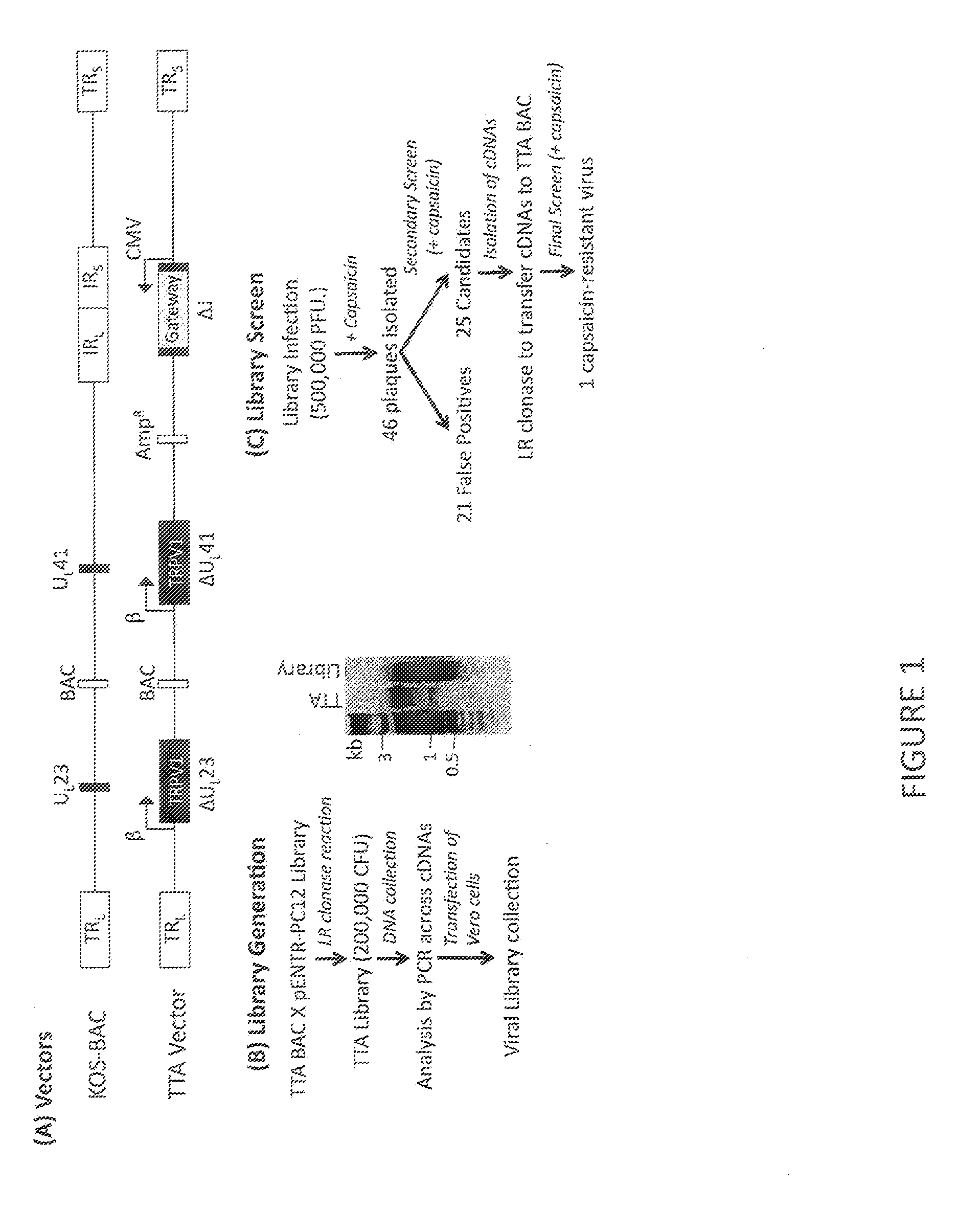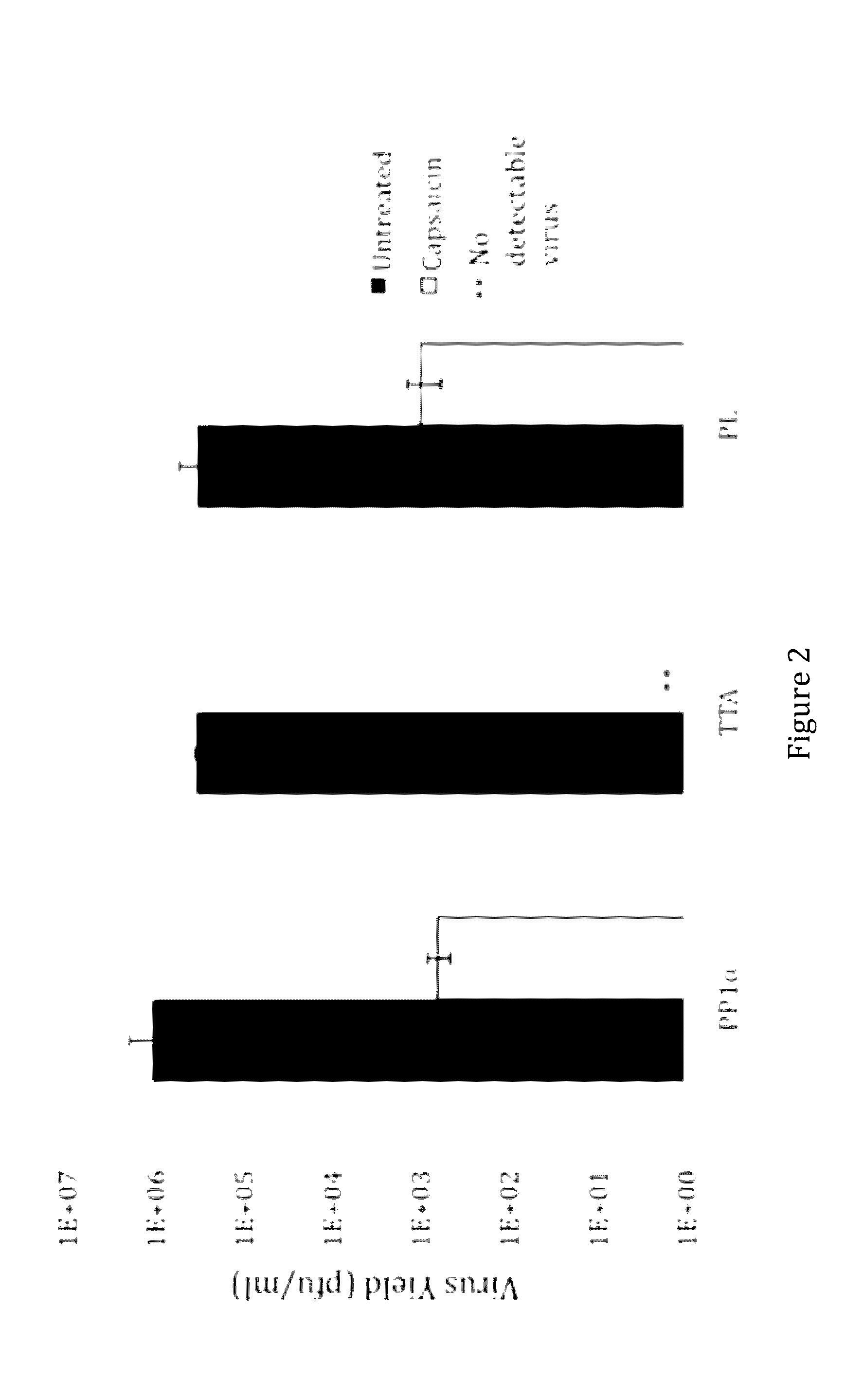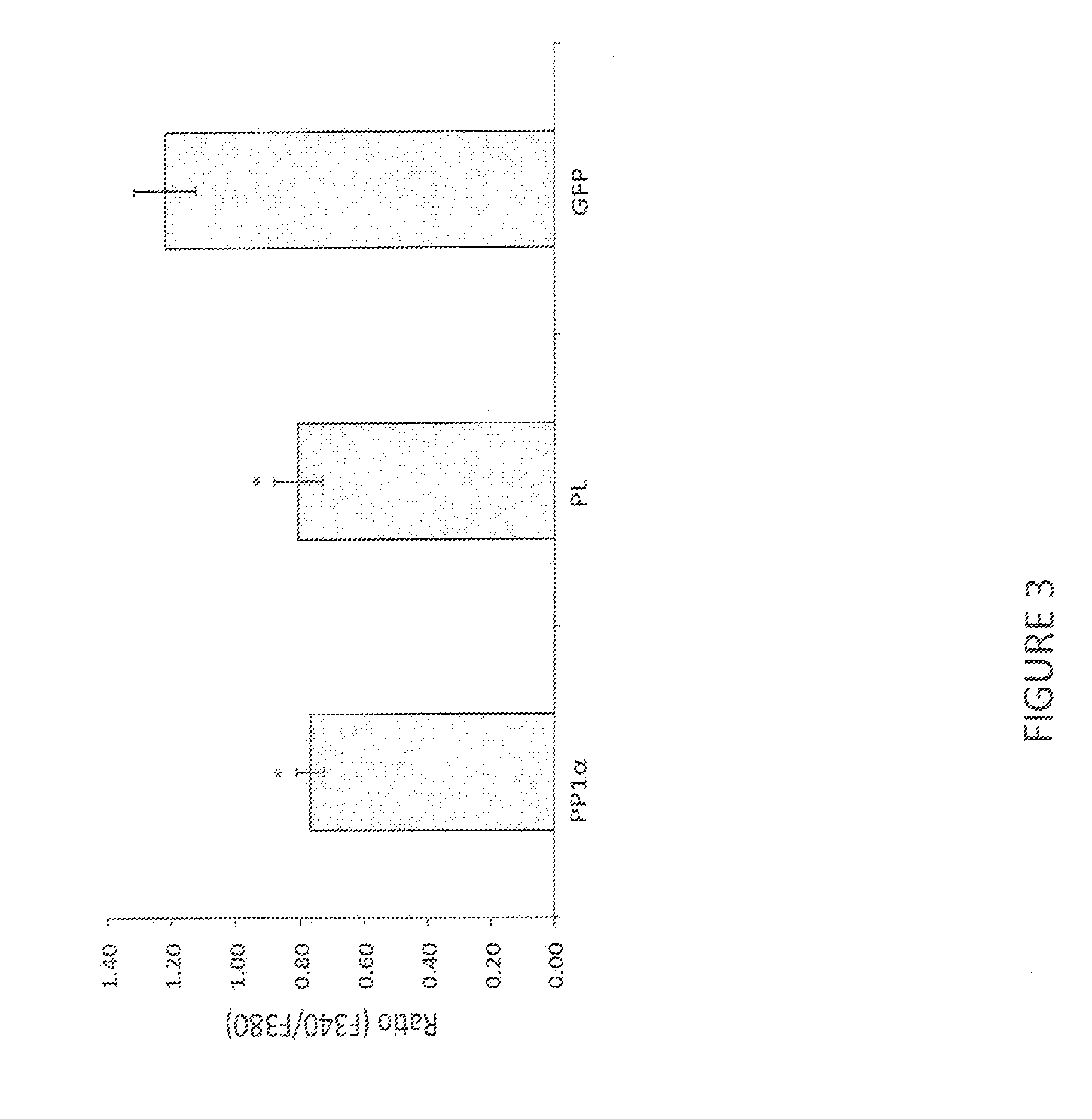TRPV1 modulatory gene product that affects TRPV1-specific pain behavioral responses identified in a functional screen of an HSV-based cDNA library
a gene product and functional screen technology, applied in the field of trpv1 modulatory gene product that affects trpv1-specific pain behavioral response, can solve the problems of imposing substantial financial and healthcare burden, difficult to selectively target pain-related pathways using drugs administered systemically, and affecting quality of li
- Summary
- Abstract
- Description
- Claims
- Application Information
AI Technical Summary
Benefits of technology
Problems solved by technology
Method used
Image
Examples
example 1
[0030]This example demonstrates the identification of a TRPV1 modulatory gene product from an HSV-based cDNA library screen for gene products that blocks capsaicin-induced TRPV1 activation and cell death, allowing HSV vector plaque formation.
[0031]We sought to test the hypothesis of whether cellular modulators of TRPV1 activation exist to control the appearance of long-term pain, a function that represents a viable target for down-regulation during the transition from acute to chronic pain. To this goal, we employed an HSV-based cDNA library expression screen methodology based on a previous screening method [Srinivasan et al., 2007] designed to identify cellular regulators of TRPV1 activation that may control the occurrence of TRPV1-related nocifensive responses.
[0032]Our library screen was based on the observation that TRPV1 expression in Vero cells, commonly used for HSV growth, caused rapid cell death via calcium influx in the presence of capsaicin, suggesting that plaque formati...
example 2
Introduction and Objectives
[0042]Increased afferent excitability has been proposed as an important pathophysiological basis of overactive bladder (OAB) and hypersensitive bladder disorders such as interstitial cystitis / bladder pain syndrome (IC / BPS). It has also been reported that transient receptor potential TRPV1 receptors predominantly expressed in C-fiber afferent pathways greatly contribute to afferent sensitization in these disease conditions. As shown in Example 1, HSV vector-mediated PP1α expression leads to the reduction in capsaicin-induced thermal hyperalgesia. Therefore, this led us to investigate the effect of HSV vectors-mediated gene delivery of PP1α on TRPV1-mediated bladder overactivity and pain-related behavior in rats.
[0043]Methods:
[0044]Replication-deficient HSV vectors encoding PP1α or green fluorescent protein (GFP) as control were injected into the bladder wall of adult female Sprague-Dawley rats. Cystometry (CMG) under urethane anesthesia was performed 1 week...
example 3
[0048]This Example demonstrates the evaluation of the HSV-PP1α vector in a rat model of Post-Herpetic Neuralgia (PHN) pain.
[0049]We had previously established a rat model of Post-Herpetic Neuralgia (PHN) pain (Goins and Kinchington 2011 J. Neurovirol. 17(6):590-9; Garry et al., 2005 Pain 118(1-2):97-111) by injecting rat footpads with MeWo cells infected with Varicella Zoster Virus (VZV) strain pOka, the parental of the Oka strain which is similar to the vaccine Oka strain (vOka). Since VZV is so cell-associated, one can only inject VZV-infected cells, not purified virus, the way one can do with HSV. Our group and others have seen statistically significant changes in both mechanical (MA) allodynia and thermal hyperalgesia (TH) nocifensive behaviors in rats starting at 1-2 weeks post VZV injection lasting out to 5-9 weeks post VZV, a very robust model of chronic pain that mimics human patient PHN. Other groups have since employed this model to evaluate various drug treatment regimens...
PUM
| Property | Measurement | Unit |
|---|---|---|
| temperatures | aaaaa | aaaaa |
| thermal pain threshold | aaaaa | aaaaa |
| temperature | aaaaa | aaaaa |
Abstract
Description
Claims
Application Information
 Login to View More
Login to View More - R&D
- Intellectual Property
- Life Sciences
- Materials
- Tech Scout
- Unparalleled Data Quality
- Higher Quality Content
- 60% Fewer Hallucinations
Browse by: Latest US Patents, China's latest patents, Technical Efficacy Thesaurus, Application Domain, Technology Topic, Popular Technical Reports.
© 2025 PatSnap. All rights reserved.Legal|Privacy policy|Modern Slavery Act Transparency Statement|Sitemap|About US| Contact US: help@patsnap.com



